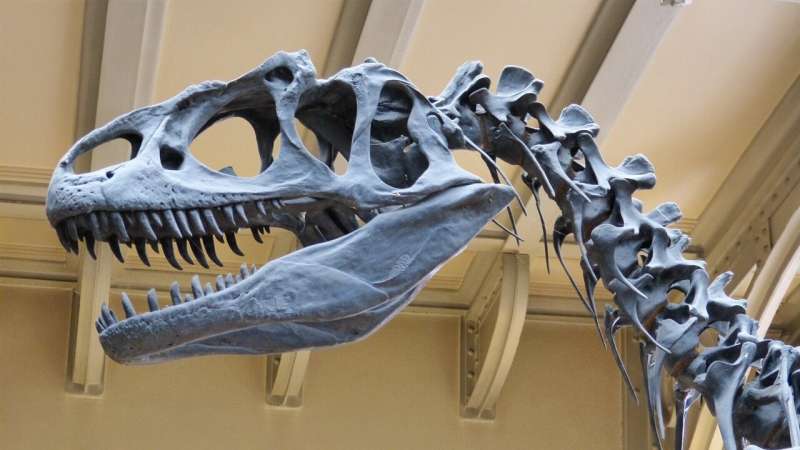This article has been reviewed according to Science X's editorial process and policies. Editors have highlighted the following attributes while ensuring the content's credibility:
fact-checked
trusted source
proofread
Team plans 3D modeling project for France's natural history collections

France's natural history collections contain nearly 6% of the world's total natural specimens across multiple institutions, and the e-COL+ project aims to capture and reconstruct these specimens in 3D for easy access and 3D printing around the world.
"I'm a researcher of vertebrate locomotion and vocalization, so I produce a lot of CT scans and 3D models—and now I'm in charge of developing the museum's own 3D digital collection," says Dr. Pauline Provini, a lecturer at the Natural History Museum in Paris, France and collaborator on the e-COL+ project. Dr. Provini is in line to become the Scientific and Technical Coordinator for the project, following the announced retirement of the current Coordinator Pierre-Yves Gagnier.
Dr. Provini and her partners plan to produce several thousand 3D models of whole animal specimens and fragmental specimens, which include bones and partial remains. The e-COL+ project is led by France's National Natural History Museum and includes 9 other national research institutions and universities.
The e-COL+ project has four main objectives. Firstly, it aims to provide modern equipment, especially 3D scanning tools, to the participating project partners so that they can digitize their collections.
Secondly, the project plans to create a comprehensive dataset of 3D models of animals that cover a wide range of taxonomy, including both living and extinct species.
"We want to have digital versions of representatives of most modern vertebrates and arthropods," says Dr. Provini. "We also want to incorporate any existing 3D models from the French collections and help to fill the gaps."
Depending on the size and type of the specimen, Dr. Provini and her team use different scanning techniques. "We use surface scanners for bones and whole skeletons, but we use CT scans for specimens that are kept in fluid," she says. "For small specimens like insects, we use external providers like the European Synchrotron Radiation Facility."
Thirdly, they wish to build AI tools to help improve the 3D model reconstruction process. "This can help with the automatic identification of a species or the parts of the specimen, which is a very important development for the project," says Dr. Provini.
The fourth and final objective is to organize storage, availability, and presentation of the digital models for both research and public use.
"We want to build an online 3D catalog that people can use to download the models. Not only researchers, but also more general audiences," says Dr. Provini.
A major benefit of this project is the ability to rapidly share access to specimens between research institutions and other museums around the world.
"Typically, institutions can borrow specimens from other places for their own exhibitions, but it can be very complicated because there's a lot of paperwork to do—especially if they're very rare or fragile specimens," says Dr. Provini. "Now we just send the numerical model, and they can 3D print the model whenever they want."
The e-COL+ project also has benefits for teaching by providing access to specimens that may otherwise be restricted.
"It will be important for learning anatomy and other subjects, but also useful for learning to use 3D printing technology and software," says Dr. Provini.
The e-COL+ project is set to conclude in 2029.
This project is being presented at the Society for Experimental Biology Annual Conference in Prague from 2–5 July 2024.
Provided by Society for Experimental Biology





















